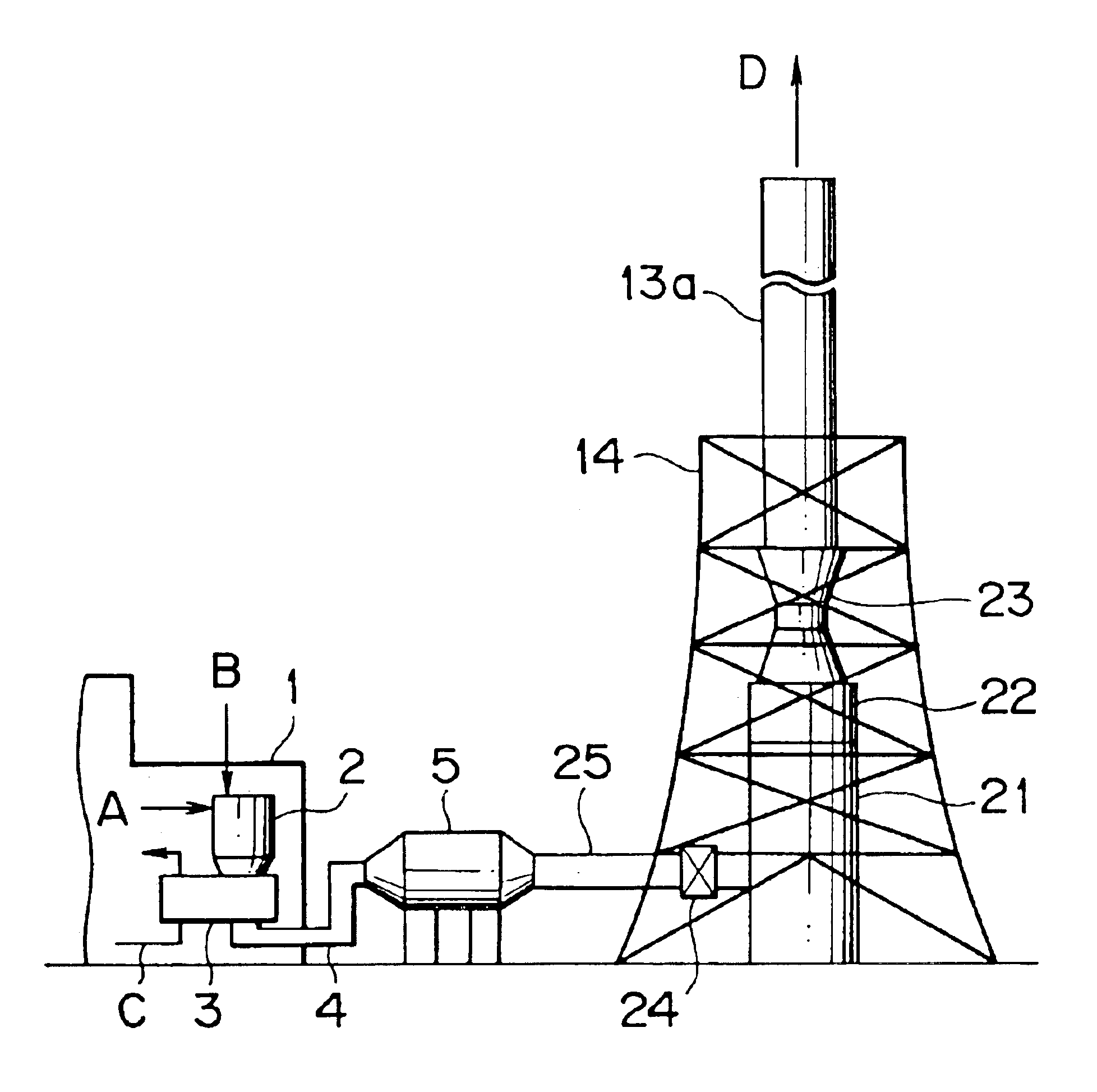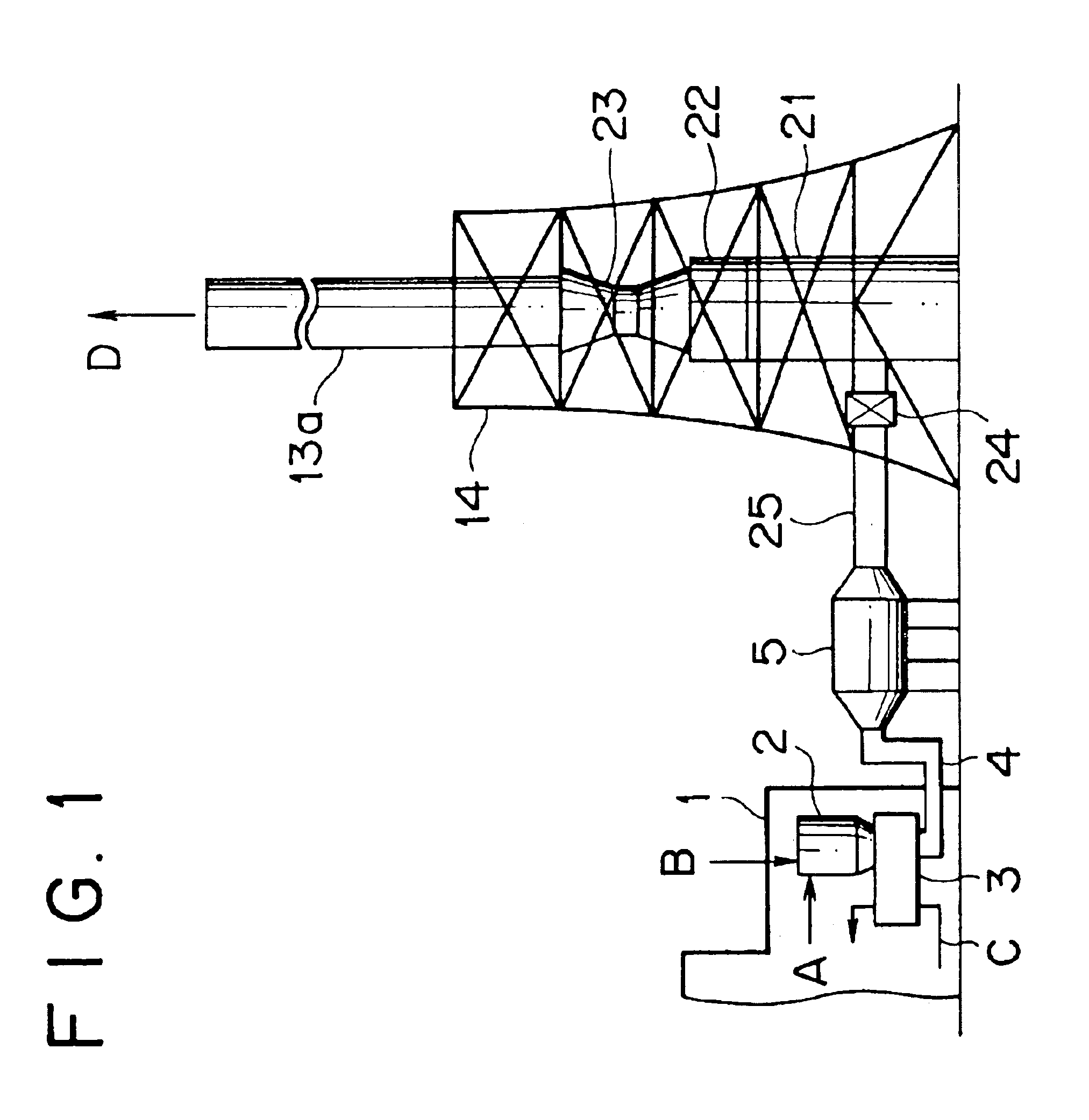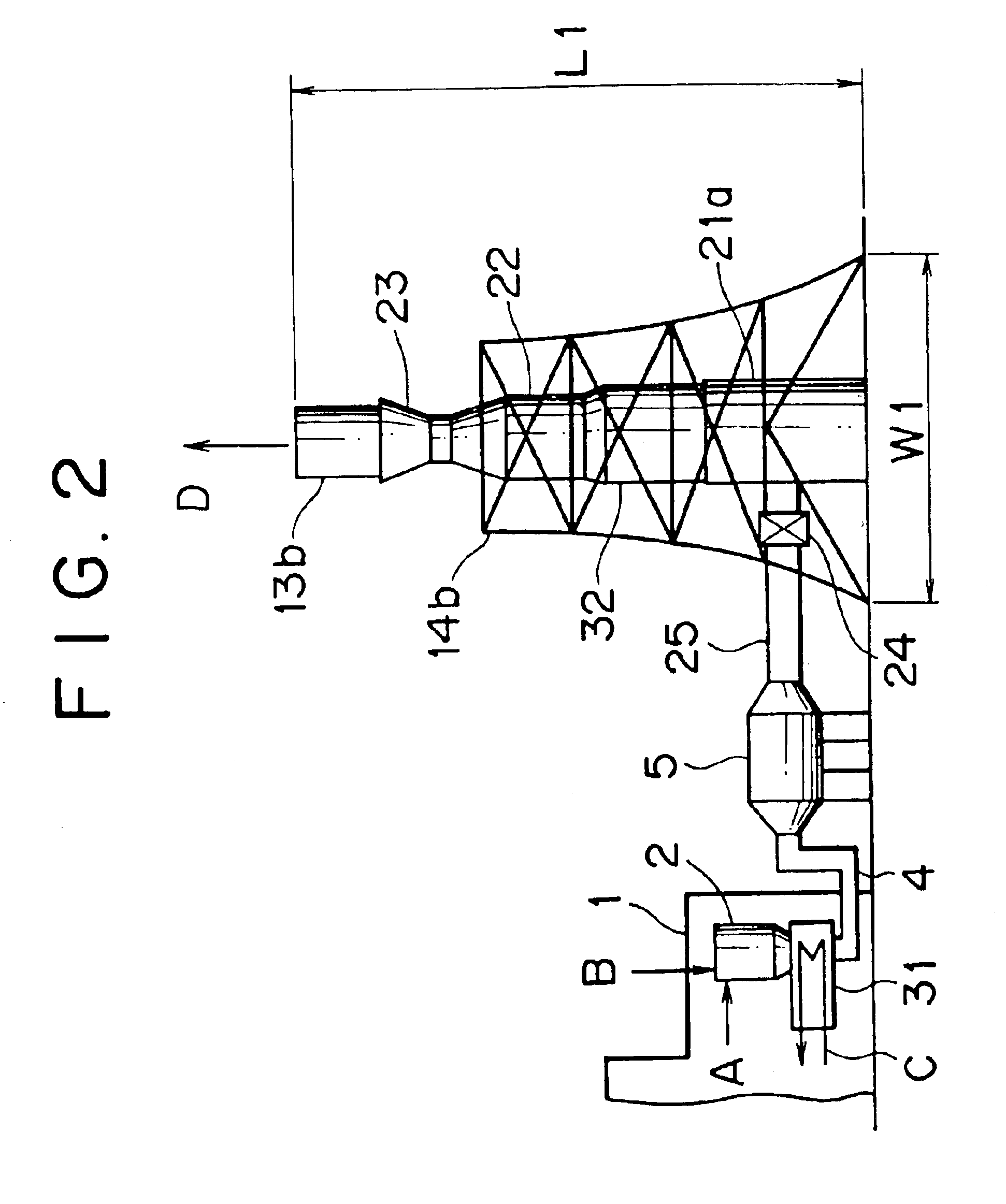Flue gas treating system and process
a technology of flue gas treatment system and process, which is applied in the direction of separation process, sulfur compound, sulfate preparation, etc., can solve the problems of large-scale and high-cost equipment disadvantage, increased cost, and certain limits
- Summary
- Abstract
- Description
- Claims
- Application Information
AI Technical Summary
Problems solved by technology
Method used
Image
Examples
first embodiment
A first embodiment of the present invention is described with reference to FIG. 1. The same elements as included in the conventional system of FIG. 9 are designated by the same reference numerals, and the duplicate explanation thereof is omitted.
The flue gas treating system of this embodiment is characterized in that, below the main body 13a of a stack, an absorption tower 21, the reheating section 22 of a gas-gas heater, and a fan 23 are arranged in line on the vertical axis of the stack so as to form part of the stack.
The heat recovery section 24 of the gas-gas heater is installed at a position which is on the way of a flue 25 connecting a dry electrostatic precipitator 5 with absorption tower 21 and on the inside of the framework 14 for the stack. Eventually, all of absorption tower 21, the heat recovery section 24 and reheating section 22 of the gas-gas heater, and fan 23 are all installed in an unoccupied space on the inside of the framework 14 for the stack.
In this embodiment,...
second embodiment
Next, a second embodiment of the present invention is described with reference to FIG. 2. The same elements as included in the first embodiment are designated by the same reference numerals, and the duplicate explanation thereof is omitted.
This embodiment is characterized in that it is equipped with an air heater (or heat exchanger) 31 comprising a non-leakage type heat exchanger of shell-and-tube structure, and a wet electrostatic precipitator 32 is installed between absorption tower 21a and reheating section 22. In this embodiment, the aforesaid air heater 31 and the previously described heat recovery section 24 of the gas-gas heater constitute a heat exchanger for carrying out the heat recovery step of the present invention. Moreover, the dry electrostatic precipitator 5 described in connection with the conventional system serves to carry out the first dust removal step of the present invention, and the aforesaid wet electrostatic precipitator 32 serves to carry out the second du...
PUM
| Property | Measurement | Unit |
|---|---|---|
| width | aaaaa | aaaaa |
| acidity | aaaaa | aaaaa |
| temperature | aaaaa | aaaaa |
Abstract
Description
Claims
Application Information
 Login to View More
Login to View More - R&D
- Intellectual Property
- Life Sciences
- Materials
- Tech Scout
- Unparalleled Data Quality
- Higher Quality Content
- 60% Fewer Hallucinations
Browse by: Latest US Patents, China's latest patents, Technical Efficacy Thesaurus, Application Domain, Technology Topic, Popular Technical Reports.
© 2025 PatSnap. All rights reserved.Legal|Privacy policy|Modern Slavery Act Transparency Statement|Sitemap|About US| Contact US: help@patsnap.com



